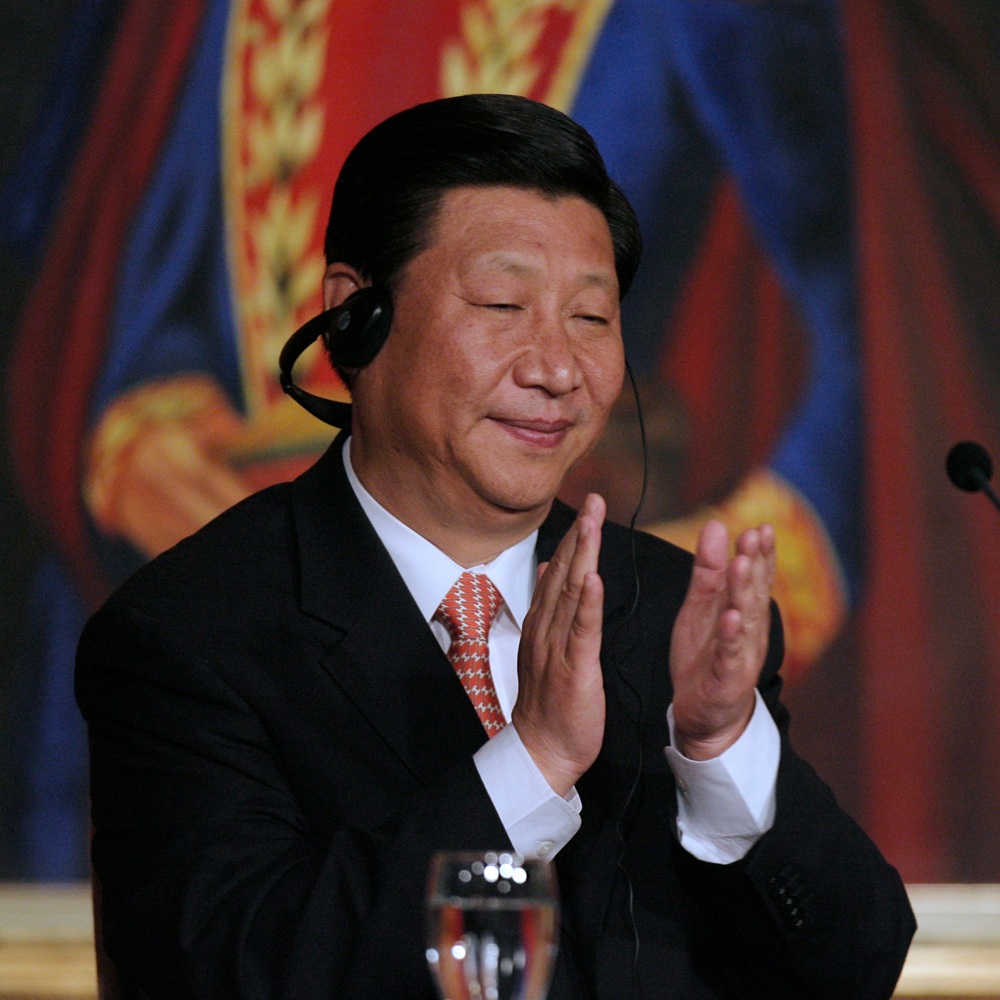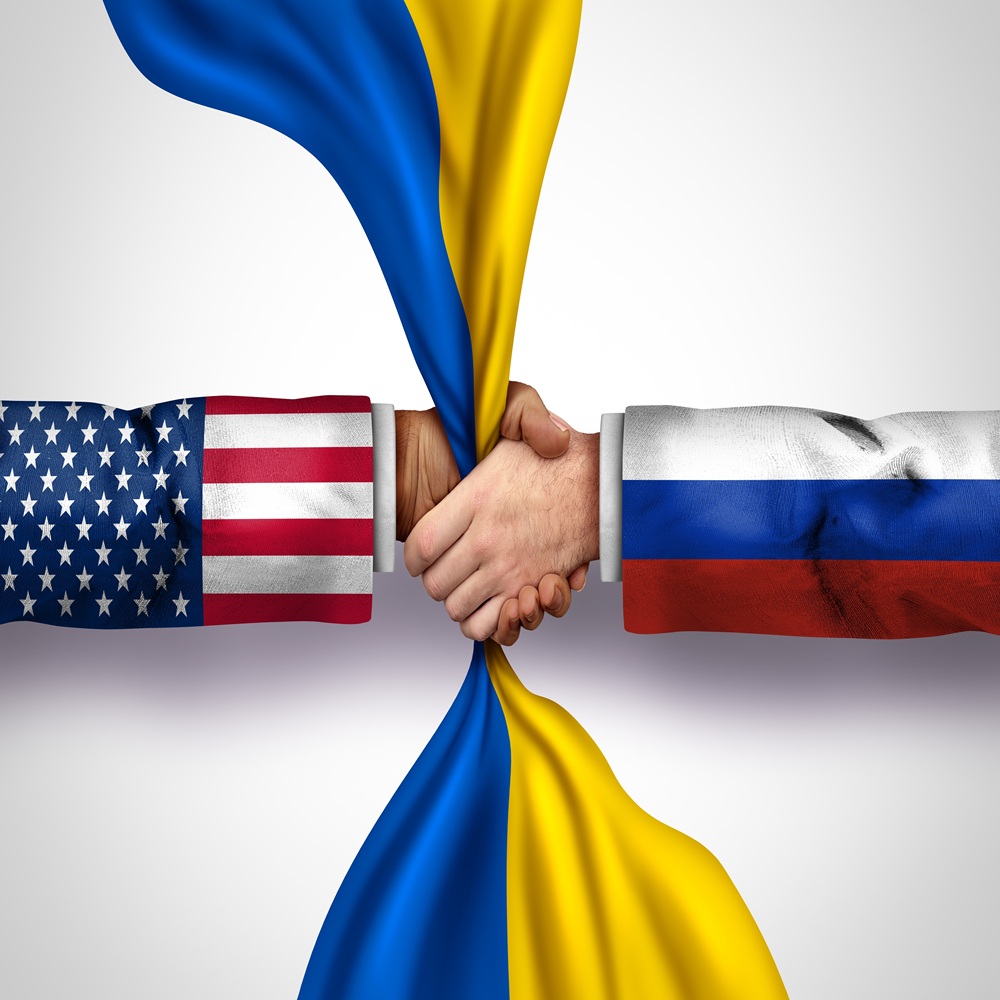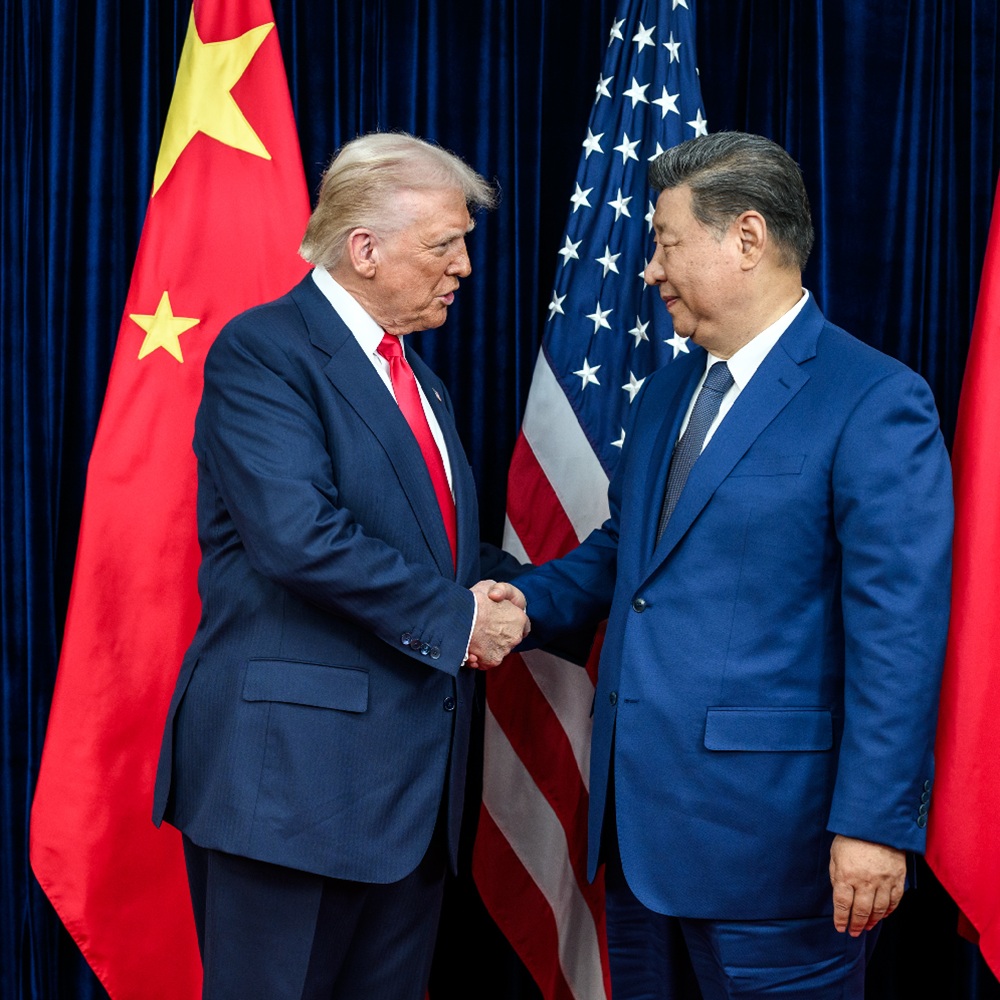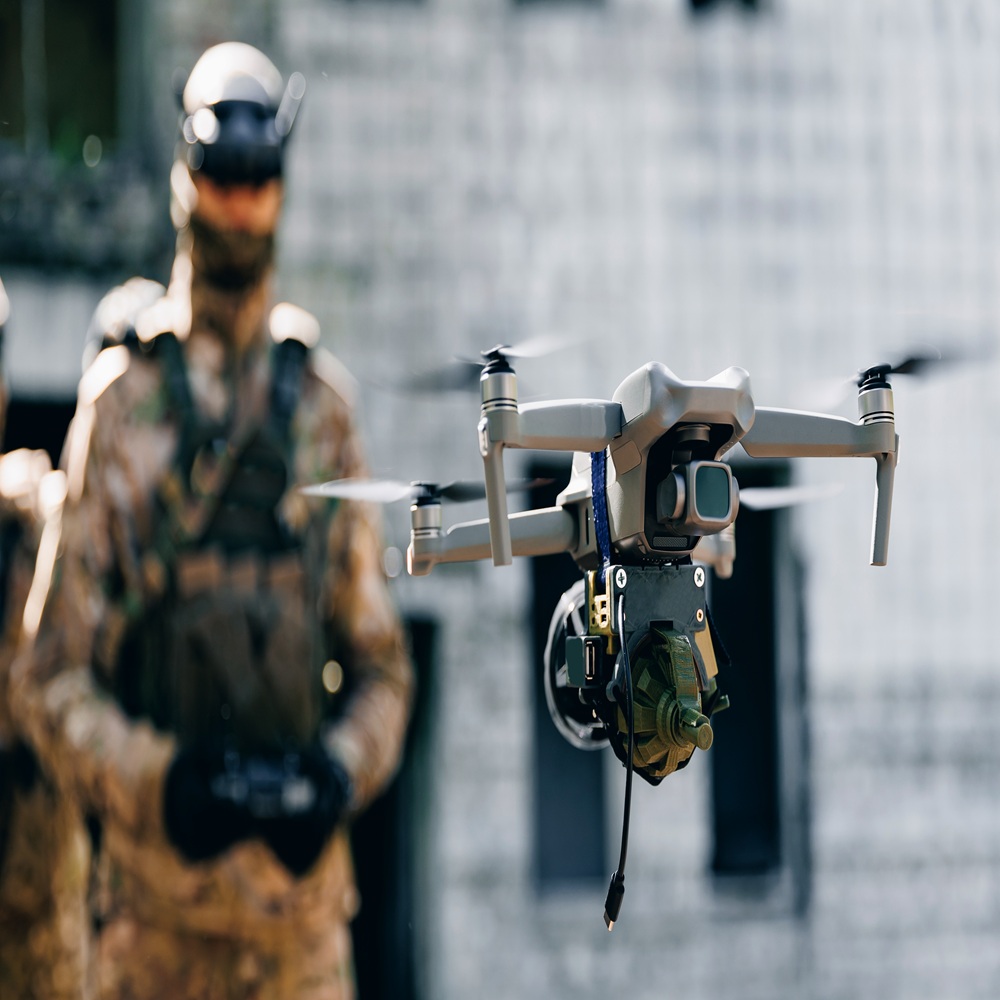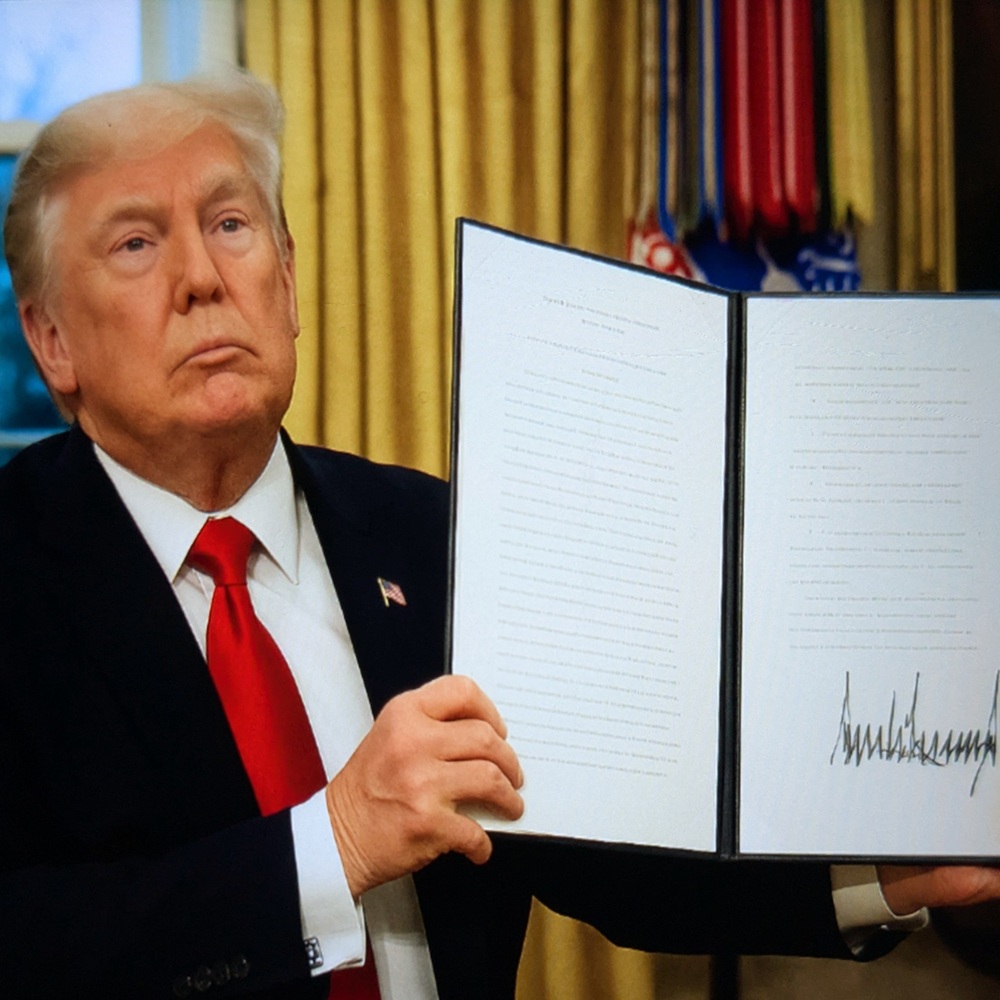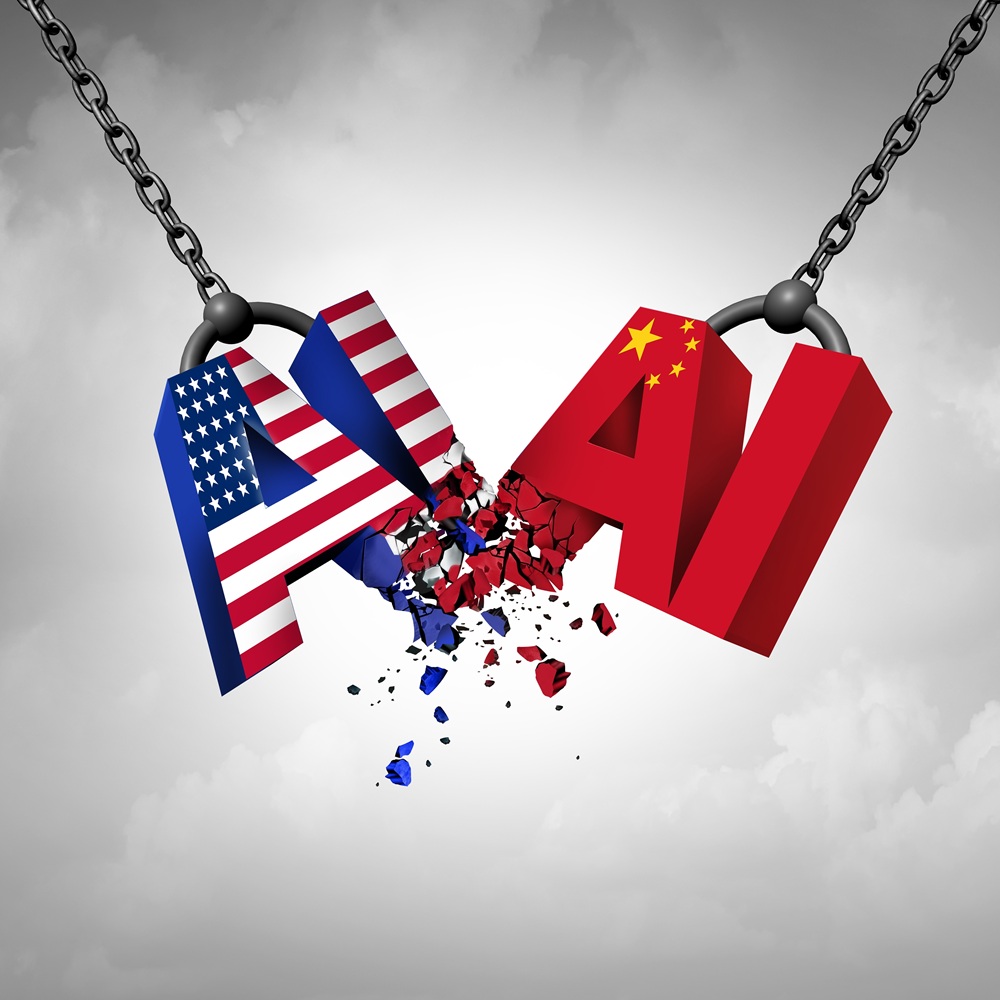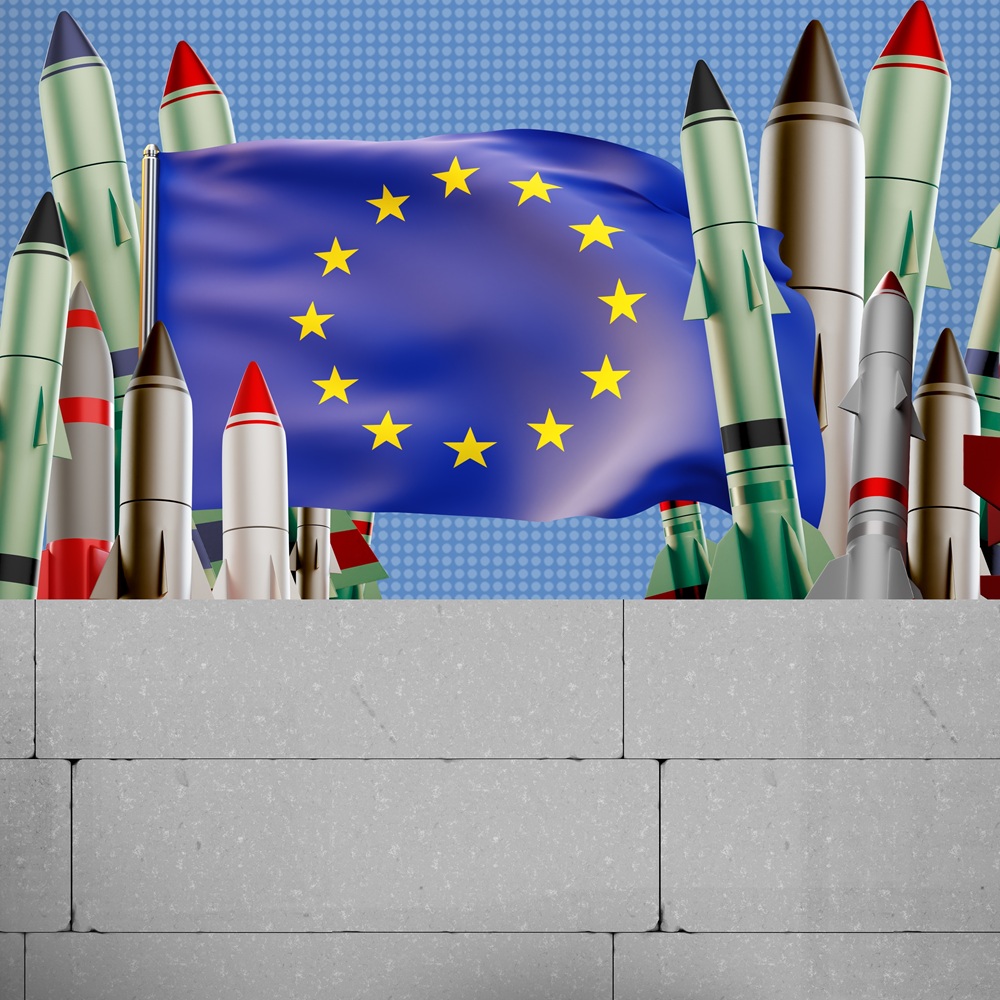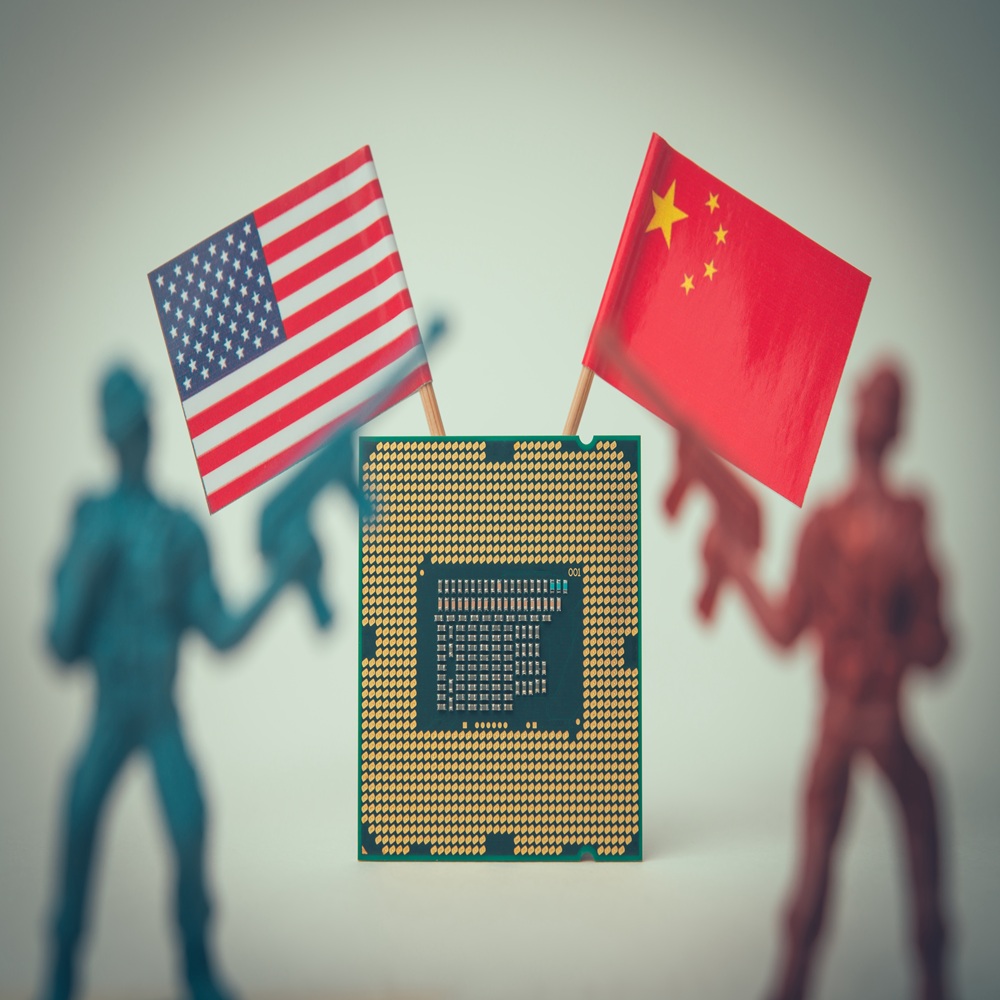Nuclear Sharing Between the U.S. and the EU. Benefits and Challenges.
by Krzysztof Śliwiński
Abstract This paper examines the NATO nuclear sharing arrangement, focusing on its benefits and challenges within the U.S.-EU security framework. Nuclear sharing involves the U.S. deploying B61 nuclear bombs in select European NATO countries, with host nations providing delivery systems and infrastructure while the U.S. retains full control, ensuring compliance with the Treaty on the Non-Proliferation of Nuclear Weapons (NPT). The arrangement strengthens NATO's deterrence posture, promotes alliance cohesion, and supports non-proliferation by dissuading the development of independent nuclear arsenals. Recent geopolitical tensions, especially Russia's invasion of Ukraine, have intensified calls for expanding sharing to countries like Poland, enhancing deterrence on NATO's eastern flank. Exercises such as Steadfast Noon validate operational readiness and signal resolve. Critics, however, highlight legal and escalation risks, potential NPT violations, and domestic opposition in host countries. Despite these issues, nuclear sharing remains a crucial component of Euro-Atlantic security, adapting to evolving threats while balancing deterrence, alliance unity, and non-proliferation goals. Key Words: International Security, Weapons of Mass Destruction, Nuclear Sharing, Alliances Introduction Nuclear sharing is a cornerstone of NATO's deterrence strategy, designed to distribute the benefits, responsibilities, and risks of nuclear deterrence across the Alliance. Under these arrangements, the United States deploys a limited number of B61 nuclear gravity bombs at bases in several European NATO member states. At the same time, those host countries provide the necessary infrastructure, security, and dual-capable aircraft (DCAs) to deliver weapons in a crisis. The weapons remain under full U.S. custody and control at all times, in compliance with the Treaty on the Non-Proliferation of Nuclear Weapons (NPT). A nuclear mission can only be authorised after explicit political approval from NATO's Nuclear Planning Group (NPG), which includes all NATO members, and the U.S. President (and potentially the UK Prime Minister). This setup ensures collective decision-making and underscores the U.S.'s extended deterrence commitments to its allies, helping prevent nuclear proliferation by giving non-nuclear states a stake in the Alliance's nuclear posture without independent arsenals.[1] The arrangements originated in the Cold War era, with the first U.S. atomic weapons arriving in Europe in 1954. By the 1960s, they were formalised through the NPG to allow non-nuclear allies input on nuclear policy. Today, approximately 100 B61 bombs are forward-deployed in Europe, hosted by five NATO countries: Belgium, Germany, Italy, the Netherlands, and Turkey. Seven NATO allies contribute DCA, including F-16s and F-35s, which serve dual roles in conventional operations and as potential nuclear delivery platforms. France and the UK maintain independent nuclear forces that complement the US-led sharing but operate outside the formal NATO structure. While the question references the EU, nuclear sharing is strictly a NATO framework; all host countries are EU members except Turkey, creating significant overlap but no direct EU-level involvement.[2] These arrangements serve multiple purposes: they enhance Alliance cohesion, provide tools for managing escalations in conflicts, and signal resolve to adversaries, such as Russia. Recent geopolitical tensions, including Russia's invasion of Ukraine, have prompted discussions about expanding sharing to strengthen deterrence on NATO's eastern flank.[3] Poland, a NATO member since 1999, has long advocated for a stronger role in the Alliance's nuclear mission amid heightened Russian threats, particularly following the 2022 invasion of Ukraine. In June 2023, Polish Prime Minister Mateusz Morawiecki first publicly expressed interest in hosting U.S. nuclear weapons under NATO's sharing policy, arguing it would bolster deterrence without violating the NPT. This push intensified in early 2025, driven by concerns over U.S. reliability under the second Trump administration and Russia's aggressive posture.[4] On March 13, 2025, President Andrzej Duda explicitly urged the U.S. to deploy nuclear warheads on Polish territory, stating in interviews that NATO infrastructure—including nuclear assets — should "shift east" to match the eastward expansion of the Alliance's borders since 1999. He emphasised that such a move would enhance security guarantees and deter future Russian aggression, while also praising France's potential extension of its "atomic umbrella" as a complementary option. Duda's proposal carried domestic political weight, positioning Poland's conservative opposition as pro-U.S. ahead of the May 2025 presidential election, where candidates debated transatlantic ties versus European autonomy.[5] Proponents argue Poland is an ideal candidate: it spends 4.7% of GDP on defence (exceeding NATO's 2% target), has built one of Europe's strongest militaries, and hosts significant U.S. rotational forces. Analysts suggest that deployment could involve adapting Polish F-35s for DCA roles or constructing secure storage facilities. However, logistical and political hurdles remain, including a potential Russian backlash and the need for NPG consensus.[6] As of October 2025, however, no U.S. nuclear weapons have been deployed to Poland, and the proposal remains under discussion without a formal U.S. commitment. Instead, Poland has deepened integration through participation in NATO's annual Steadfast Noon nuclear exercise, which began on October 13, 2025, across Belgium, the Netherlands, and the North Sea — testing procedures for credibility and safety. Poland joined as a full participant alongside Finland, Germany, and the U.S., signalling growing involvement in nuclear planning but stopping short of hosting assets. Alternatives like a dedicated U.S. "nuclear umbrella" declaration for Poland have been floated to avoid escalation without physical deployment.[7] What academics say Academic experts agree that Nuclear sharing is a cornerstone of NATO's defence strategy. This arrangement refers to an agreement according to which the United States deploys non-strategic nuclear weapons on allied territory while maintaining ownership and peacetime custody.[8]This allows selected NATO members to participate in nuclear planning and provide delivery systems, creating a framework that extends American nuclear deterrence across the Alliance. The operational structure of nuclear sharing involves dual-key arrangements in which both U.S. and host-nation authorisation are required for weapon employment. The United States maintains absolute control and custody of its nuclear weapons forward-deployed in Europe, while Allies provide military support for the DCA mission with conventional forces and capabilities. Nuclear sharing arrangements play a vital role in the Alliance's interconnection and remain a key component of security guarantees and the indivisibility of security across the entire Euro-Atlantic area.[9] These arrangements are coordinated through NATO's Nuclear Planning Group, ensuring multilateral consultation on nuclear policy and targeting decisions. Currently, only five European NATO members have signed bilateral nuclear-sharing agreements with the U.S. These are: Belgium, Germany, Italy, the Netherlands, and Turkey, under which the U.S. stores B61 nuclear gravity bombs at their airbases and their dual-capable aircraft can deliver them in a NATO context. These arrangements, dating back to the Cold War and reaffirmed in subsequent treaties, involve approximately 100 U.S. warheads as of 2025.[10] Nuclear sharing serves multiple strategic purposes within the alliance framework. It strengthens extended deterrence by visibly integrating allied forces into NATO's nuclear posture, thereby reassuring front-line states of American commitment.[11] Experts claim that these arrangements helped prevent nuclear proliferation by reducing incentives for European allies to develop independent arsenals during the Cold War.[12] Additionally, nuclear sharing distributes the political and operational burdens of nuclear responsibility across participating members rather than concentrating them solely with the United States. However, nuclear sharing faces significant criticisms. Legal scholars argue that forward-deploying U.S. weapons on non-nuclear states potentially contravenes the Non-Proliferation Treaty's spirit, creating ongoing diplomatic tensions with Russia and other nations.[13] Domestic opposition within host countries and concerns about the escalation of crises further complicate these arrangements.[14] Despite these challenges, nuclear sharing remains integral to NATO's deterrence strategy, particularly as renewed great-power competition has reinforced alliance solidarity and commitment to collective defence in the contemporary security environment. Benefits of Nuclear Sharing Firstly, official sources from NATO and the U.S. government consistently highlight the benefits of their efforts in preserving peace, deterring aggression, fostering unity, and aligning with global non-proliferation norms. The primary official argument for nuclear sharing is its role in bolstering NATO's deterrence posture against evolving threats, particularly from nuclear-armed adversaries like Russia. NATO's 2022 Strategic Concept and related documents emphasise that the Alliance's nuclear capabilities, including U.S. forward-deployed weapons, serve to "preserve peace, prevent coercion and deter aggression". [15] The 2024 Washington Summit Declaration reaffirms this, stating that "nuclear deterrence is the cornerstone of Alliance security" and that NATO's capabilities provide the "supreme guarantee" for all members.[16] By integrating U.S. nuclear assets with European contributions, such as DCA from seven Allies, these arrangements complicate adversaries' planning and enhance crisis management. As noted in NATO's factsheet, "nuclear sharing provides military and political tools for deterrence and can be used to manage escalation in a crisis," with DCA serving as a "visible and valuable instrument for strategic communications" to signal resolve.[17] Accordingly, in a security environment marked by Russia's integration of nuclear forces into its military strategy and threats against Allies, nuclear sharing ensures credible deterrence without provoking conflict. NATO’s former Secretary General Jens Stoltenberg argued that "the purpose of NATO's nuclear weapons is not to provoke a conflict but to preserve peace, deter aggression and prevent coercion," underscoring that arrangements like those involving Germany are vital for the "security of the whole alliance".[18] The U.S. State Department echoes this rationale, claiming that with NATO "numerically outgunned on the central front," nuclear sharing maintains a "nuclear deterrent posture sufficient to deter the Soviet aggression," a logic that persists against modern threats.[19] Against this backdrop, exercises like Steadfast Noon[1] Further strengthen this by simulating nuclear scenarios, ensuring "the credibility, effectiveness, safety and security of the nuclear deterrent mission".[20] Overall, according to official sources, these mechanisms help preserve stability in the Euro-Atlantic area, reduce reliance on nuclear weapons, and adapt to challenges posed by actors such as China and North Korea. Secondly, nuclear sharing fosters unity and shared responsibility among NATO members, distributing the benefits, risks, and political burdens of deterrence more evenly among them. NATO's publications explicitly state that these arrangements "ensure that the benefits, responsibilities and risks of nuclear deterrence are shared across the Alliance," demonstrating "unity and cohesion amongst all Allies" through joint decision-making in the Nuclear Planning Group (NPG).[21] This shared approach, as NATO sources claim, reinforces the indivisibility of security, as outlined in NATO's nuclear policy: "Nuclear sharing arrangements play a vital role in the interconnection of the Alliance and remain one of the main components of security guarantees and the indivisibility of security of the whole Euro-Atlantic area".[22] The 2024 Summit Declaration commits to "modernising its nuclear capabilities" and "strengthening its nuclear planning capability," ensuring broader participation to "demonstrate Alliance unity and resolve".[23] By involving European Allies in Allied dual-capable aircraft (DCA) missions and infrastructure, nuclear sharing is intended to help mitigate disparities in capabilities, promote equitable burden-sharing, and prevent fragmentation within the Alliance. Thirdly, NATO posits that nuclear sharing supports non-proliferation efforts. Contrary to criticisms, official sources argue that nuclear sharing advances non-proliferation by reducing incentives for Allies to pursue independent nuclear programs. NATO's review of the NPT at 50 years notes that these arrangements "have contributed to security in Europe and non-proliferation as Allies under the U.S. nuclear umbrella have not felt pressure to develop their own weapons".[24] Codified during the 1960s negotiations, they comply fully with the Treaty, as both the U.S. and the USSR ensured that no prohibitions were placed on such setups.[25] The U.S. State Department details this compromise, which allowed for "wartime nuclear sharing" without requiring peacetime transfer, thereby reassuring allies like West Germany and dissuading proliferation.[26] Post-Cold War reductions — over 90% in NATO's nuclear stockpile — align with NPT Article VI disarmament goals while maintaining deterrence.[27] This balance facilitates peaceful nuclear cooperation under the IAEA (International Atomic Energy Agency) safeguards, thereby strengthening the global nuclear non-proliferation regime.[28] Finally, according to the U.S. State Department, nuclear sharing underscores the U.S. commitment to European security, countering fears of "decoupling" where allies doubt American resolve. The State Department describes it as addressing whether the U.S. would "sacrifice Chicago to save Hamburg," by making nuclear weapons available for Europe's defence.[29] NATO's policy affirms that U.S. strategic forces, supplemented by forward-deployed assets, provide the "supreme guarantee," with Allies contributing to ensure integration across domains.[30] To sum up, official arguments portray nuclear sharing as indispensable for deterrence, cohesion, non-proliferation, and transatlantic solidarity. These arrangements, according to Western policy-makers and experts, have sustained European stability for decades, with ongoing modernisation ensuring their relevance in an unpredictable world. Nuclear Sharing in the Face of an Ongoing War in Ukraine Nuclear sharing has allegedly bolstered NATO's overall deterrence posture, helping to prevent Russian escalation in Ukraine, including potential nuclear use. NATO's nuclear capabilities, including U.S. forward-deployed weapons in Europe, are described as essential to "preserve peace, prevent coercion and deter aggression" in the face of Russia's nuclear threats and integration of nuclear forces into its strategy.[31] This has indirectly supported Ukraine by signalling to Russia that any significant escalation — such as nuclear strikes or attacks on NATO territory — would invoke a collective response, thereby limiting Russia's options in the conflict. Russia's invasion has been accompanied by nuclear sabre-rattling to deter Western intervention, but nuclear sharing has helped counter this by maintaining credible deterrence without direct NATO involvement in Ukraine.[32] In that sense, the already mentioned exercises like Steadfast Noon simulate nuclear scenarios, reinforcing the "credibility, effectiveness, safety and security" of the deterrent, which has been crucial amid threats from Russia, China, and North Korea. Analysts note that this has made Russian nuclear signalling less credible over time, allowing the West to provide advanced weapons to Ukraine that were initially considered taboo.[33] However, Russia's threats have still delayed and limited the scale of Western aid, such as restrictions on long-range strikes into Russia, due to fears of crossing "red lines".[34] As mentioned before, nuclear sharing agreements have arguably fostered greater unity among NATO allies, enabling sustained military and economic support for Ukraine. By sharing the "benefits, responsibilities and risks of nuclear deterrence," nuclear sharing demonstrates Alliance solidarity and the "indivisibility of security" in the Euro-Atlantic area.[35] This has reassured European allies, particularly those near Russia, allowing them to commit resources to Ukraine without fearing abandonment. For example, Poland's push to join nuclear sharing reflects heightened threat perceptions from the war, aiming to strengthen deterrence and defence in a hostile environment. NATO's support, including intelligence sharing and strategic communications, has, at least in the eyes of Western policy-makers, deterred Russian use of chemical, biological, or nuclear weapons in Ukraine.[36] Without reassurance from nuclear sharing of U.S. commitment — countering fears of "decoupling" — it might have been harder for Europe to maintain this level of involvement.[37] From Russia's perspective, nuclear sharing exacerbates tensions, viewing it as part of NATO's eastward expansion that provoked the invasion.[38] Putin has used this to support claims behind "Russia's Special Military Operation" in Ukraine, framing Ukraine's potential NATO integration as a threat that could place U.S. nuclear weapons near Russia's borders, similar to the Cuban Missile Crisis in reverse. This rationale has fueled Russian nuclear threats, which aim to limit Western aid and prolong the conflict by raising escalation fears.[39] The war has heightened nuclear risks, with some analysts arguing it presents greater dangers than the Cuban Missile Crisis due to the potential for miscalculation.[40] Russia's deployment of tactical nuclear weapons in Belarus as a counter to NATO's sharing arrangements has further escalated postures.[41] Recent decisions by the U.S., UK, and France to allow Ukraine to use long-range missiles against Russian targets have prompted Putin to warn of a direct NATO-Russia war, indirectly tying into nuclear sharing's role in deterrence dynamics.[42] This has possibly complicated peace efforts, as Russia perceives Western escalation as existential, making negotiations harder. As mentioned earlier, nuclear sharing has arguably helped mitigate proliferation risks during the war. By providing a shared nuclear umbrella, it reduces the incentives for allies like Poland and Germany to pursue independent nuclear programs, thereby supporting the NPT.[43] Possibly then, the invasion has not sparked widespread proliferation, partly because NATO's deterrent reassures members. Interestingly, however, the debates over a "European nuclear deterrent" independent of the U.S. — spurred by uncertainties such as potential shifts in U.S. policy under Trump — could undermine this if not managed effectively.[44] The war has also renewed focus on modernising nuclear sharing, with NATO committing to enhancing capabilities at the 2024 Washington Summit.[45] This has indirectly affected Ukraine by diverting Russian resources and attention, though some argue it prolongs the stalemate without a decisive victory. In summary, nuclear sharing has possibly acted as a stabilising force for NATO, enabling robust support for Ukraine and deterring Russian nuclear escalation. However, it has also contributed to heightened tensions and Russian intransigence, complicating pathways to peace. As the war persists into 2025, proposals to expand sharing (e.g., to Poland) reflect its evolving role in countering ongoing threats. Conclusion The "Steadfast Noon" exercises are arguably a clear signal to any potential adversary, including Russia, that NATO is prepared to defend all its members against any threats, including nuclear ones. Such exercises involve the use of American non-strategic nuclear weapons stationed in Europe, although no real combat weapons are used during the drills. The exercises serve not only to practice deterrence against possible nuclear attacks but also to prepare for the potential use of nuclear weapons by NATO if necessary. The fact that these exercises involve nuclear deterrence indicates that NATO's defence strategy includes readiness to escalate to a nuclear response if provoked by a nuclear attack. The locations of these nuclear weapons are not publicly disclosed. Still, there is speculation about their presence in countries like Poland, particularly in light of recent secret agreements that allow foreign troops to enter Polish territory. On the other hand, one should also consider potential downsides, especially for countries in Central and Eastern Europe. Nuclear sharing for potential allied use in wartime poses significant risks despite its deterrence aims. One major downside is its incompatibility with the NPT, which violates Articles I and II.[2] Enabling the indirect transfer of control to non-nuclear states undermines global non-proliferation efforts and draws criticism from states such as China. This arrangement also heightens proliferation risks, as peacetime training and exercises normalise nuclear readiness, potentially inspiring similar setups in Asia-Pacific regions like Japan and South Korea, escalating regional tensions.[46] Security concerns include increased escalation dangers, where limited nuclear use could spiral into full-scale war, especially amid vulnerabilities at host bases like Incirlik in Türkiye during political instability. Expanding sharing, such as to Poland, fuels arms races with Russia and exposes more European sites to attacks, without adding credible deterrence given NATO's conventional superiority. Politically, it breeds divisiveness within NATO, fostering resentment among allies and diverting resources from conventional forces, while eroding U.S. control and complicating disarmament. Domestically, host nations face public backlash and moral burdens from anti-nuclear norms, straining alliance cohesion. Russia's objections in NPT forums further highlight how sharing provokes international backlash, risking broader conflicts. Notes [1] On Monday (October 13 2025), NATO began its annual nuclear deterrence exercise Steadfast Noon. The exercise is a long-planned, routine training activity and part of NATO’s broader efforts to maintain readiness and ensure transparency around its nuclear posture. It is not linked to any current world events, and no live weapons are used.[2] Article I - Each nuclear-weapon State Party to the Treaty undertakes not to transfer to any recipient whatsoever nuclear weapons or other nuclear explosive devices or control over such weapons or explosive devices directly, or indirectly; and not in any way to assist, encourage, or induce any non-nuclear-weapon State to manufacture or otherwise acquire nuclear weapons or other nuclear explosive devices, or control over such weapons or explosive devices. Article II - Each non-nuclear-weapon State Party to the Treaty undertakes not to receive the transfer from any transferor whatsoever of nuclear weapons or other nuclear explosive devices or of control over such weapons or explosive devices directly, or indirectly; not to manufacture or otherwise acquire nuclear weapons or other nuclear explosive devices; and not to seek or receive any assistance in the manufacture of nuclear weapons or other nuclear explosive devices. See more at: https://www.un.org/en/conf/npt/2005/npttreaty.html References [1] NATO’s Nuclear Sharing Arrangements. (2022, February). NATO. https://www.nato.int/nato_static_fl2014/assets/pdf/2022/2/pdf/220204-factsheet-nuclear-sharing-arrange.pdf[2] Kristensen, H. M., Korda, M., Johns, E., & Knight-Boyle, M. (2023, November 8). Nuclear weapons sharing, 2023. Bulletin of the Atomic Scientists. https://thebulletin.org/premium/2023-11/nuclear-weapons-sharing-2023/[3] Johns, E. (2025, October 10). Incomplete Upgrades at RAF Lakenheath Raise Questions About Suspected US Nuclear Deployment. Federation of American Scientists. https://fas.org/publication/incomplete-upgrades-lakenheath-questions-nuclear/[4] Johns, E. (n.d.). Poland’s bid to participate in NATO nuclear sharing. IISS. Retrieved October 14, 2025, from https://fas.org/publication/incomplete-upgrades-lakenheath-questions-nuclear/[5] Poland’s president urges U.S. to move nuclear warheads to Polish territory, FT reports. (2025, March 13). Reuters. https://www.reuters.com/world/polands-president-urges-us-move-nuclear-warheads-polish-territory-ft-reports-2025-03-13/[6] Poland’s president vows to spend 4.7% of GDP on defence this year. (2025, February 5). Euronews. https://www.euronews.com/my-europe/2025/02/05/polands-president-vows-to-spend-47-of-gdp-on-defence-this-year[7] NATO’s annual nuclear exercise Steadfast Noon begins. (2025, October 13). NATO. https://www.nato.int/cps/en/natohq/news_238367.htm[8] von Hlatky, S., & Lambert-Deslandes, É. (2024). The Ukraine war and nuclear sharing in NATO. International Affairs, 100(2), 467-485. https://academic.oup.com/ia/article-abstract/100/2/509/7617216?redirectedFrom=fulltext[9] NATO’s nuclear deterrence policy and forces. (2025, October 13). NATO. https://www.nato.int/cps/fr/natohq/topics_50068.htm?selectedLocale=en#:~:text=Nuclear%20consultation,are%20members%20of%20the%20NPG[10] NATO’s Nuclear Sharing Arrangements. (2022, February). NATO. https://www.nato.int/nato_static_fl2014/assets/pdf/2022/2/pdf/220204-factsheet-nuclear-sharing-arrange.pdf[11] von Hlatky, S., & Lambert-Deslandes, É. (2024). The Ukraine war and nuclear sharing in NATO. International Affairs, 100(2), 467-485. https://academic.oup.com/ia/article-abstract/100/2/509/7617216?redirectedFrom=fulltext[12] Khalessi, D. (2015). Strategic ambiguity: Nuclear sharing and the secret strategy for drafting articles I and II of the nonproliferation treaty. The Nonproliferation Review, 23(1-2), 81-103. https://doi.org/10.1080/10736700.2016.1155865 [13] Park, K. C., & Choo, J. (2022). NATO's nuclear sharing strategy and its implications for establishing a new strategy for strengthening extended deterrence on the Korean Peninsula. International Area Studies Review, 26(1), 51-78. https://doi.org/10.18327/jias.2022.1.26.1.51 [14] Smith, M. A. (2004). To neither use them nor lose them: NATO and nuclear weapons since the cold war. Contemporary Security Policy, 25(3), 485-514. https://doi.org/10.1080/1352326042000330637[15] NATO’s nuclear deterrence policy and forces. (2025, October 13). NATO. https://www.nato.int/cps/en/natohq/topics_50068.htm[16] Washington Summit Declaration. (2024, July 10). NATO. https://www.nato.int/cps/en/natohq/official_texts_227678.htm[17] NATO’s Nuclear Sharing Arrangements. (n.d.). NATO. Retrieved October 20, 2025, from https://www.nato.int/nato_static_fl2014/assets/pdf/2022/2/pdf/220204-factsheet-nuclear-sharing-arrange.pdf[18] Germany’s support for nuclear sharing is vital to protect peace and freedom. (2020, May 11). NATO. https://www.nato.int/cps/en/natohq/opinions_175663.htm[19] Ford, C. A. (2019, December 9). Challenges of Policymaking in Responsible Nuclear Weapons Stewardship. US Department of State. https://2017-2021.state.gov/challenges-of-policymaking-in-responsible-nuclear-weapons-stewardship/[20] NATO’s annual nuclear exercise Steadfast Noon begins. (2025, October 13). NATO. https://www.nato.int/cps/en/natohq/news_238367.htm[21] NATO’s Nuclear Sharing Arrangements. (n.d.). NATO. Retrieved October 20, 2025, from https://www.nato.int/nato_static_fl2014/assets/pdf/2022/2/pdf/220204-factsheet-nuclear-sharing-arrange.pdf[22] NATO’s nuclear deterrence policy and forces. (2025, October 13). NATO. https://www.nato.int/cps/en/natohq/topics_50068.htm[23] Washington Summit Declaration. (2024, July 10). NATO. https://www.nato.int/cps/en/natohq/official_texts_227678.htm[24] Durkalec, J. (2018, June 29). The Nuclear Non-proliferation Treaty at fifty: a midlife crisis. NATO. https://www.nato.int/docu/review/articles/2018/06/29/the-nuclear-non-proliferation-treaty-at-fifty-a-midlife-crisis/index.html[25] NATO’s Nuclear Sharing Arrangements. (n.d.). NATO. Retrieved October 20, 2025, from https://www.nato.int/nato_static_fl2014/assets/pdf/2022/2/pdf/220204-factsheet-nuclear-sharing-arrange.pdf[26] Ford, C. A. (2019, December 9). Challenges of Policymaking in Responsible Nuclear Weapons Stewardship. US Department of State. https://2017-2021.state.gov/challenges-of-policymaking-in-responsible-nuclear-weapons-stewardship/[27] See more at: https://www.iaea.org/sites/default/files/publications/documents/infcircs/1970/infcirc140.pdf[28] See more at: https://www.iaea.org/[29] Ford, C. A. (2019, December 9). Challenges of Policymaking in Responsible Nuclear Weapons Stewardship. US Department of State. https://2017-2021.state.gov/challenges-of-policymaking-in-responsible-nuclear-weapons-stewardship/[30]NATO’s nuclear deterrence policy and forces. (2025, October 13). NATO. https://www.nato.int/cps/en/natohq/topics_50068.htm[31] NATO’s nuclear deterrence policy and forces. (2025, October 13). NATO. https://www.nato.int/cps/en/natohq/topics_50068.htm [32] Nuclear Stability and Escalation Risks in Europe. (2023, September 1). Foreign Policy Research Institute. https://www.fpri.org/article/2023/09/nuclear-stability-and-escalation-risks-in-europe/[33] Ibidem.[34] Kimball, D., & Bugos, S. (2022, February 28). Russia’s War on Ukraine and the Risk of Nuclear Escalation: Answers to Frequently Asked Questions. Arms Control Association. https://www.armscontrol.org/issue-briefs/2022-02/FAQ-russia-ukraine[35] NATO’s support for Ukraine. (2025, October 14). NATO. https://www.nato.int/cps/en/natohq/topics_192648.htm[36] Dickinson, P., Arick, R., & Lander Finch, N. (2025, October 15). How the US and Europe can deter and respond to Russia’s chemical, biological, and nuclear threats. Atlantic Council. https://www.atlanticcouncil.org/in-depth-research-reports/report/how-the-us-and-europe-can-deter-and-respond-to-russias-chemical-biological-and-nuclear-threats/[37] Dalton, T. (2022, April 8). Nuclear Nonproliferation After the Russia-Ukraine War. Georgetown Journal of International Affairs. https://gjia.georgetown.edu/2022/04/08/nuclear-nonproliferation-after-the-russia-ukraine-war/[38] Magnier, E. J. POST. X. Retrieved October 21, 2025, from https://x.com/ejmalrai/status/1796511588465201374[39] Ukraine: how nuclear weapons continue to increase the risks, two years on. (n.d.). ICAN (International Campaign to Abolish Nuclear Weapons). Retrieved October 21, 2025, from https://www.icanw.org/ukraine_two_years_how_nuclear_weapons_increase_the_risks[40] Kimballl, D., & Bugos, S. (2022, February 28). Russia’s War on Ukraine and the Risk of Nuclear Escalation: Answers to Frequently Asked Questions. Arms Control Association. https://www.armscontrol.org/issue-briefs/2022-02/FAQ-russia-ukraine [41] Kayali, L., Jungholt, T., & Fritz, P. (2024, July 4). Europe Is Quietly Debating a Nuclear Future Without the US. POLITICO. https://www.politico.com/news/magazine/2024/07/04/europe-us-nuclear-weapons-00166070[42] Katchanovski, I. (n.d.). POST. X. Retrieved October 21, 2025, from https://x.com/I_Katchanovski/status/1858244090909127000[43] Dalton, T. (2022, April 8). Nuclear Nonproliferation After the Russia-Ukraine War. Georgetown Journal of International Affairs. https://gjia.georgetown.edu/2022/04/08/nuclear-nonproliferation-after-the-russia-ukraine-war/[44] Samuelki, O. (2025, March 11). Europe going nuclear would be a catastrophic mistake. https://www.aljazeera.com/opinions/2025/3/11/europe-going-nuclear-would-be-a-catastrophic-mistake[45] NATO’s support for Ukraine. (2025, October 14). NATO. https://www.nato.int/cps/en/natohq/topics_192648.htm[46] Analysis of the Incompatibility of NATO’s Nuclear Sharing Arrangements with the Treaty on the Non-Proliferation of Nuclear Weapons. (2024). China Arms Control and Disarmament Association China Institute of Nuclear Industry Strategy. https://www.cinis.com.cn/zhzlghyjzy/yjbg/1446912/2024072914514738359.pdf
